9. Actions and Configuration Menu¶
Per default the menu is enabled on all MQC pages. You can simply
switch it on or off by clicking the Menu icon within the MES Quality
Commander banner in the top-left.

Figure 9.1 Enable the menu within the MES Quality Commander banner¶
The MQC Menu is divided into Actions and the Configuration.
9.1. Actions¶
9.1.1. Refresh Data¶
Once you have configured Data Sources and imported data, you can gradually import your file reports by copying new files / directories into the configured directories. To consider your newly added files/directories, press the “Refresh” Button.
Each time you update Adapters configuration, to consider your changes (e.g. adding custom adapter or disabling base adapter), press the “Refresh” Button.
Alternatively, you can enable the Automatic Refresh checkbox, so that MQC refreshes the specified directories and files automatically when changes are detected.
MQC searches all configured files and subdirectories recursively to load new file reports into the collection of your analysis.
Changes inside the added directories (new files, removal of files or even changes within the files) are automatically detected.
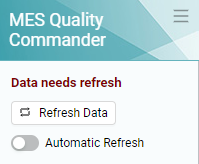
Figure 9.2 The “Needs refresh” status message appears due to changes within the monitored directories.¶
When clicking on the Refresh button the message will show to the “Data is up-to-date” status message, after the data has been refreshed.
9.1.2. Dashboard Customization¶
This dialog provides different options to customize your Dashboard (see Dashboard). Clicking on this option makes the Dahboard editable. In other words, the tiles become volatile and the visualizations can be changed.
Figure 9.3 View of Dashboard in customizable mode.¶
The different customization options once the dashboard is in edit mode are as follows:
Resize, by hovering over the boundary of the visualization and drag it to obtain the desirable size. There is however a limit to the minimum size a visualization can get.
Remove, by hovering the visualizatiion and clicking the red button at the top right corner.
Rearrange, by dragging and dropping the visualization to another empty space of the same or larger size.
Additionally, a menu of options is present below the Customize Dashboard.
Figure 9.4 Menu options for customizing dashboard.¶
The Add Tile button opens a new dialog with different groups of tiles
(Project, Quality, Availability, Action and Tool) that can be added.
Simply select the tile of your choice and click on the Add button to
include it in the dashboard. If the minimum size of the tile cannot fit to the
available empty spaces then the tile cannot be added. If you would still like
to add another tile then close the “Add Tile” dialog and resize, rearrange or
remove existing tiles and try again.
Figure 9.5 Add Tile dialog with tabs for different visualizations grouped by type.¶
The Remove all tiles buttton provides an easy way to get an empty dashboard
by removing all tiles so that you can add the tiles of your choice later.
Finally, the Reset to Default button will undo all the changes made and
reset the dashboard with the default tiles.
Note
All the customizations made to the dashboard are persistent when the dxp is saved.
9.1.3. Create Report¶
In this dialog you can create a Status Report (see Status Report).
9.1.4. Data of the Quality / Filtered by Quality¶
In this dialog you get a drill down from Quality to Data (see Data Details Drill Down).
9.2. Configuration¶
The bottom of menu contains all configurations of the analysis.
9.2.1. Adapters¶
In this dialog you manage adapters (see Custom Adapters).
9.2.2. Data Sources¶
Users can import either single files or directories by clicking on the Data Sources section and select files or directories that contain file reports, e.g. our example data that was delivered to you in section Quick Start Guide.
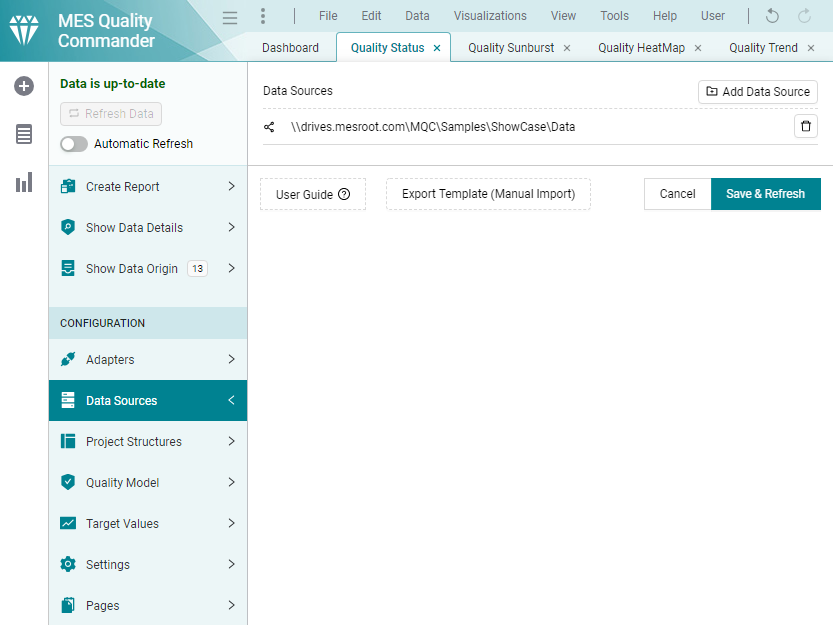
Figure 9.6 Configure Data Sources by adding files and/or directories¶
9.2.3. Project structures¶
Users can load, export or reload the Project Structures excel configuration (please refer to Project Structures Configuration for more information).
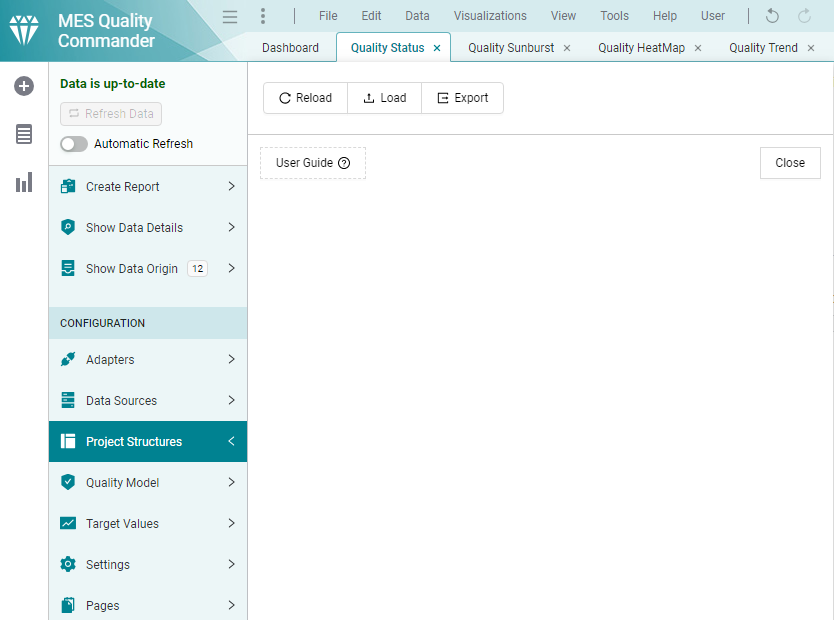
Figure 9.7 Configure Project Structures¶
9.2.4. Quality Model¶
Users can load, export or reload the Quality Model excel configuration. A default Quality Model is provided with MQC (please refer to Quality Model Configuration for more information).
9.2.5. Target Values¶
Users can load, reload or remove the Target Values excel configurations (please refer to Target Values for more information).
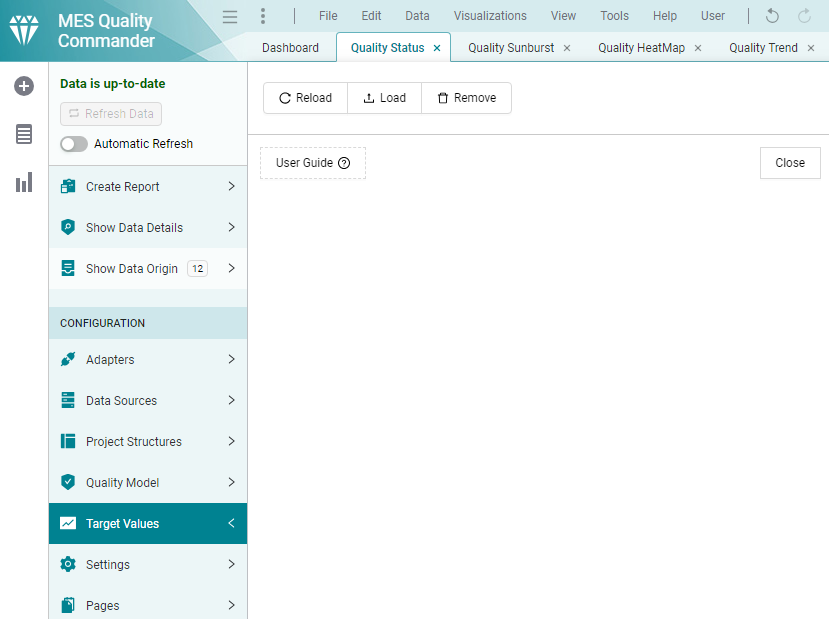
Figure 9.8 Configure Target values¶
Note
In the Project Structure, Quality Model and Target Values dialogs the Reload button is only visible when a configuration file has already been imported. A tooltip shows the paths to the currently loaded file.
9.2.6. Settings¶
This section contains a group of settings:
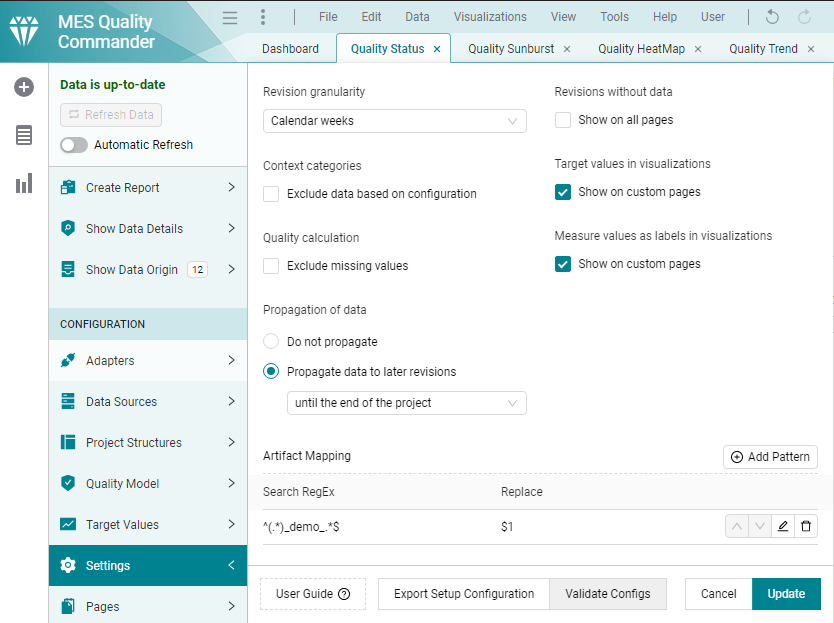
Figure 9.9 Settings dialog¶
9.2.6.1. Revision granularity¶
Can be used to change the degree of compactions of the revisions for which data exists to better visualize your trend line charts. The revision granularity can be selected depending on your needs (see Figure 9.10).
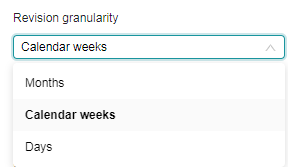
Figure 9.10 The default revision granularity is CalendarWeeks, but it might be useful to change it to Days or Months¶
9.2.6.2. Context Categories¶
9.2.6.3. Quality Calculation¶
(see Quality Properties)
9.2.6.4. Propagation of data¶
(see Data Propagation)
9.2.6.5. Revisions without data¶
9.2.6.6. Target values in visualization¶
9.2.6.7. Measure values as labels in visualizations¶
9.2.6.8. Artifact Mapping¶
MQC provides a different possibility to map artifacts (for more details please see Artifact Mapping) in case you do not have your project structure ready yet. For that, you need to define regular expression patterns which can map artifact paths to artifact names.
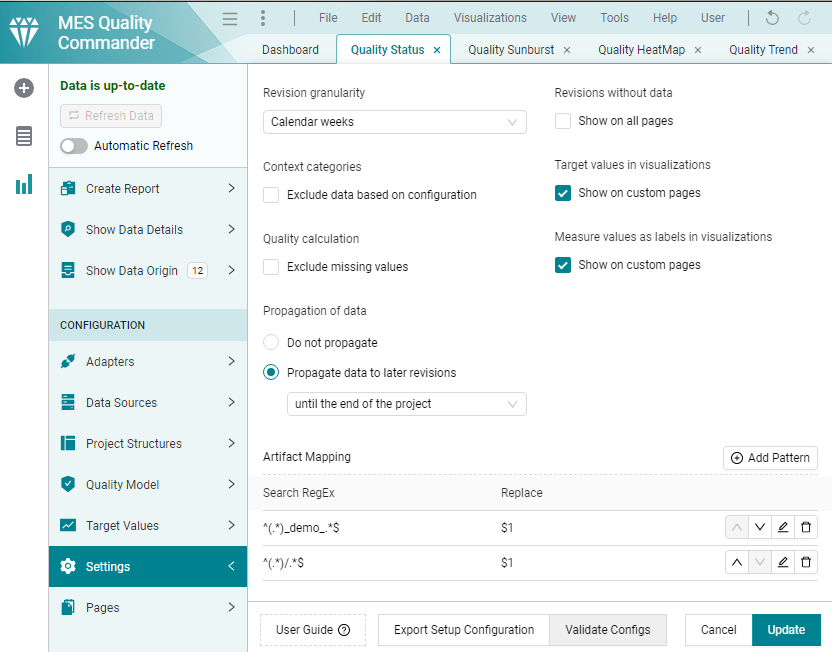
Figure 9.11 Artifact Mapping in settings section of configuration menu¶
By pressing the Add Pattern button, a new dialog Artifact Mapping Pattern is opened. Here, you can define the Search RegEx and Replace values and the effective result can also be directly seen on the pageable list.
For example in Figure 9.12
, the pattern is defined as: Search RegEx: ^(.*)_demo_.*$ , Replace: $1, which means the
artifact name is the substring of artifact path before _demo_.
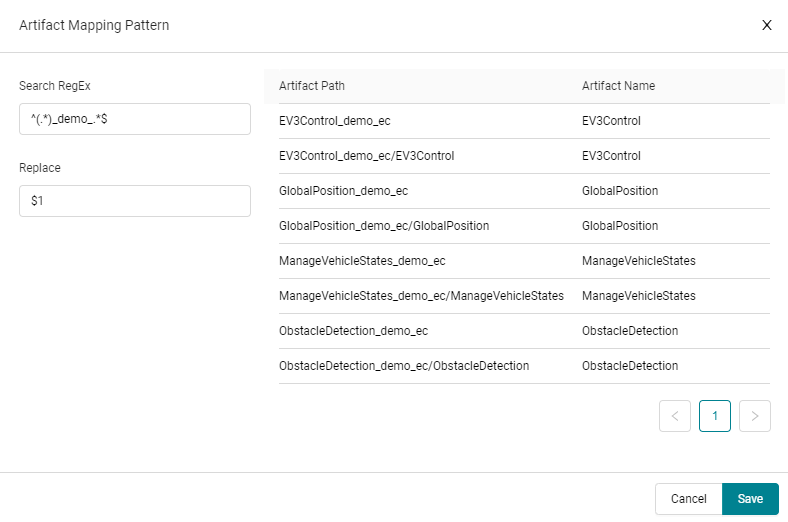
Figure 9.12 Define new pattern for artifact mapping¶
As you can see in Figure 9.11, more than one pattern can be defined. The first matching pattern from the list will be applied to the artifact path. The order of the patterns can be changed in the list. The result of these patterns are also present in the export of artifact structure.
Note
These artifact patterns will be applied until there is no project structure imported otherwise artifact mapping in project structure configuration has more priority.
9.2.7. Pages¶
This section contains all pages that exist in MQC, categorized in four groups (Quality, Data, Tool and Custom pages). You can add or remove them by selecting or deselecting the checkboxes.
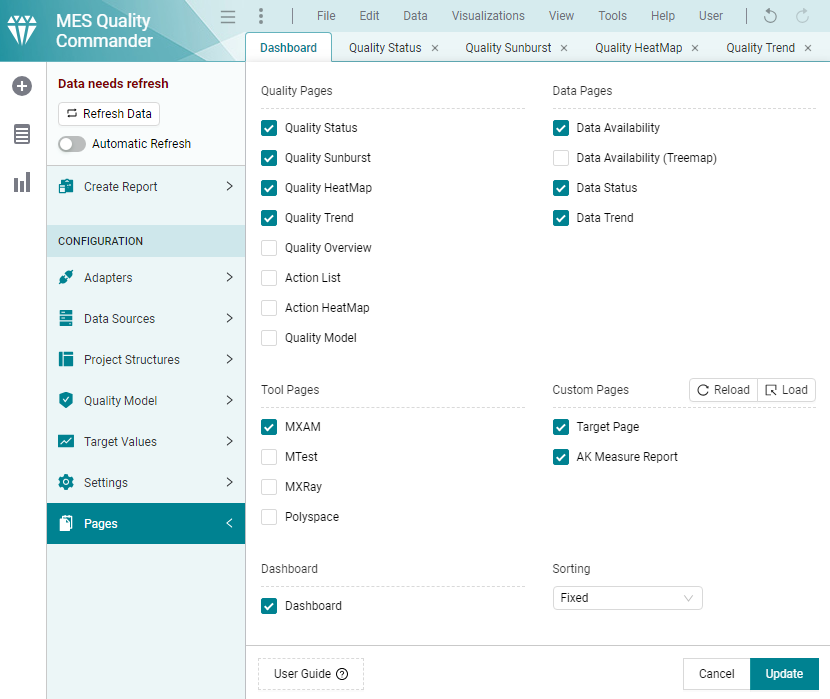
Figure 9.13 Pages dialog¶
Quality pages include Quality Status, Quality Sunburst, Quality HeatMap, Quality Trend, Quality Model and Action List pages.
Data pages include Data Availability, Data Status, Data Trend pages.
Tool pages include MXAM, MTest, MXRAY, Polyspace, which contains data from these data sources (see Tool Pages).
Custom pages: are defined in Custom Pages.
Sorting: there are two options for sorting pages (see Page order in the Pages dialog). By default the pages are in Fixed order. If Custom is selected for ordering, new pages are added after existing pages.
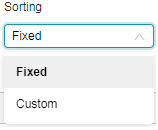
Figure 9.14 Page order in the Pages dialog¶
Note
To apply changes in the Settings and Pages dialogs you have to click
on the Update button.